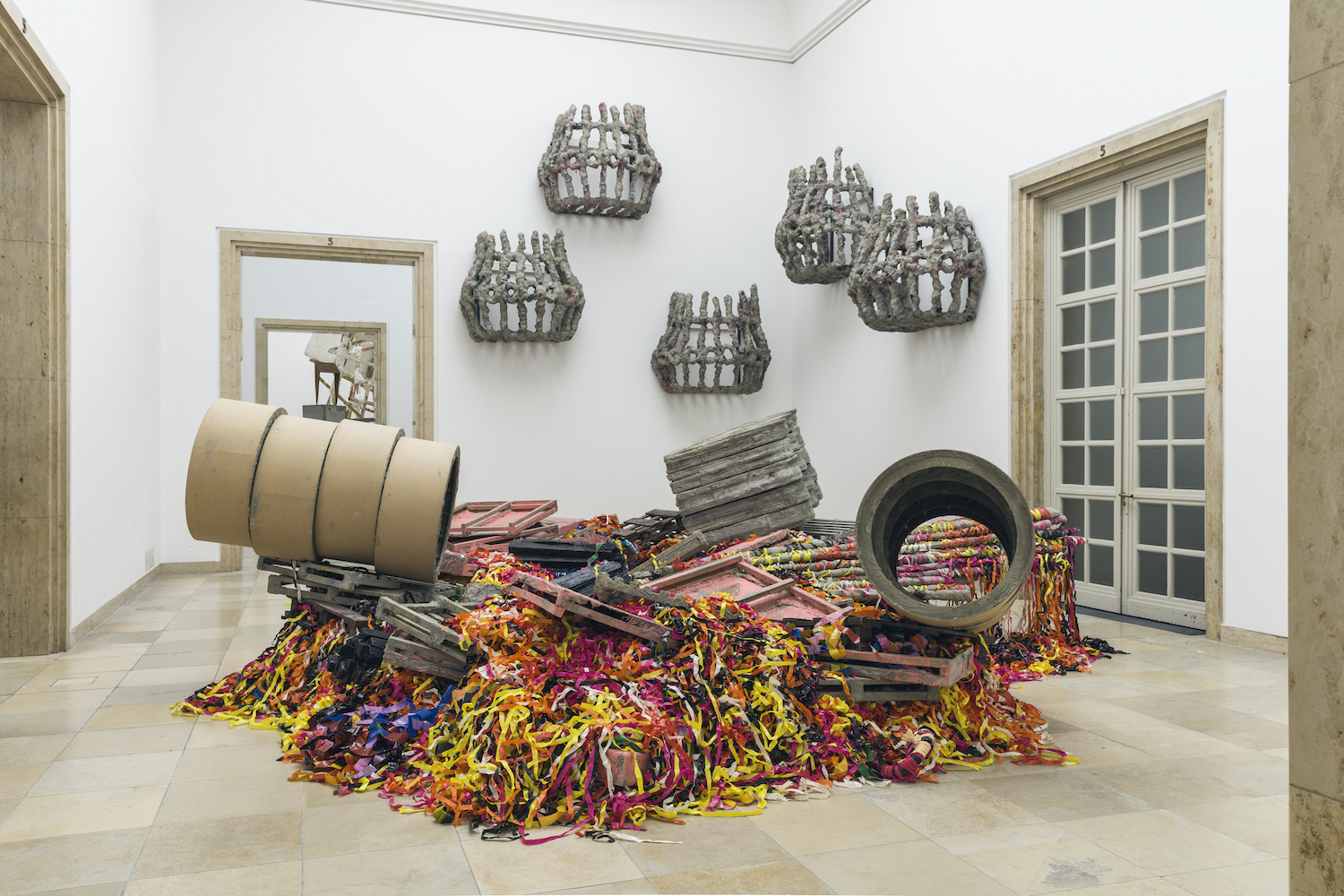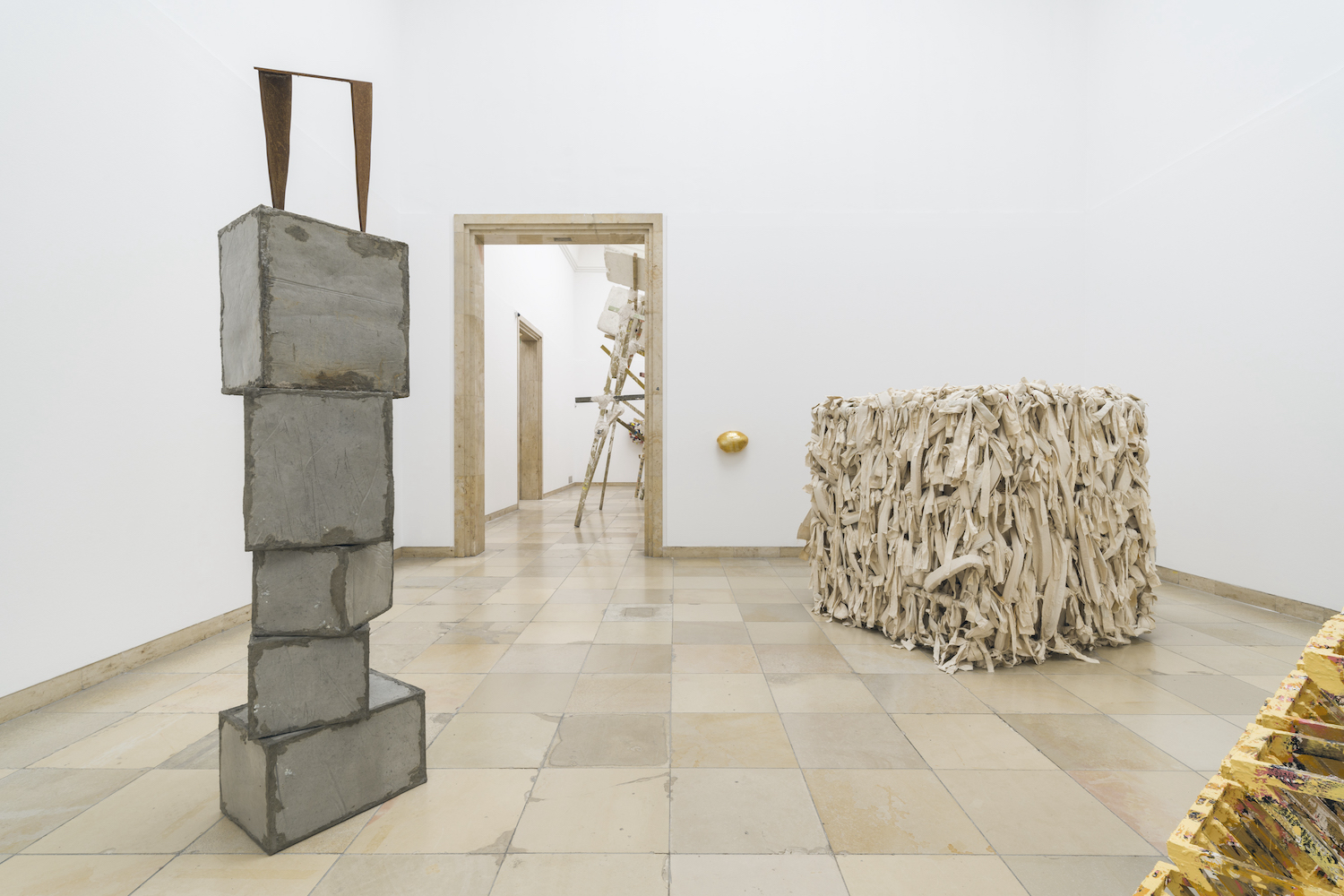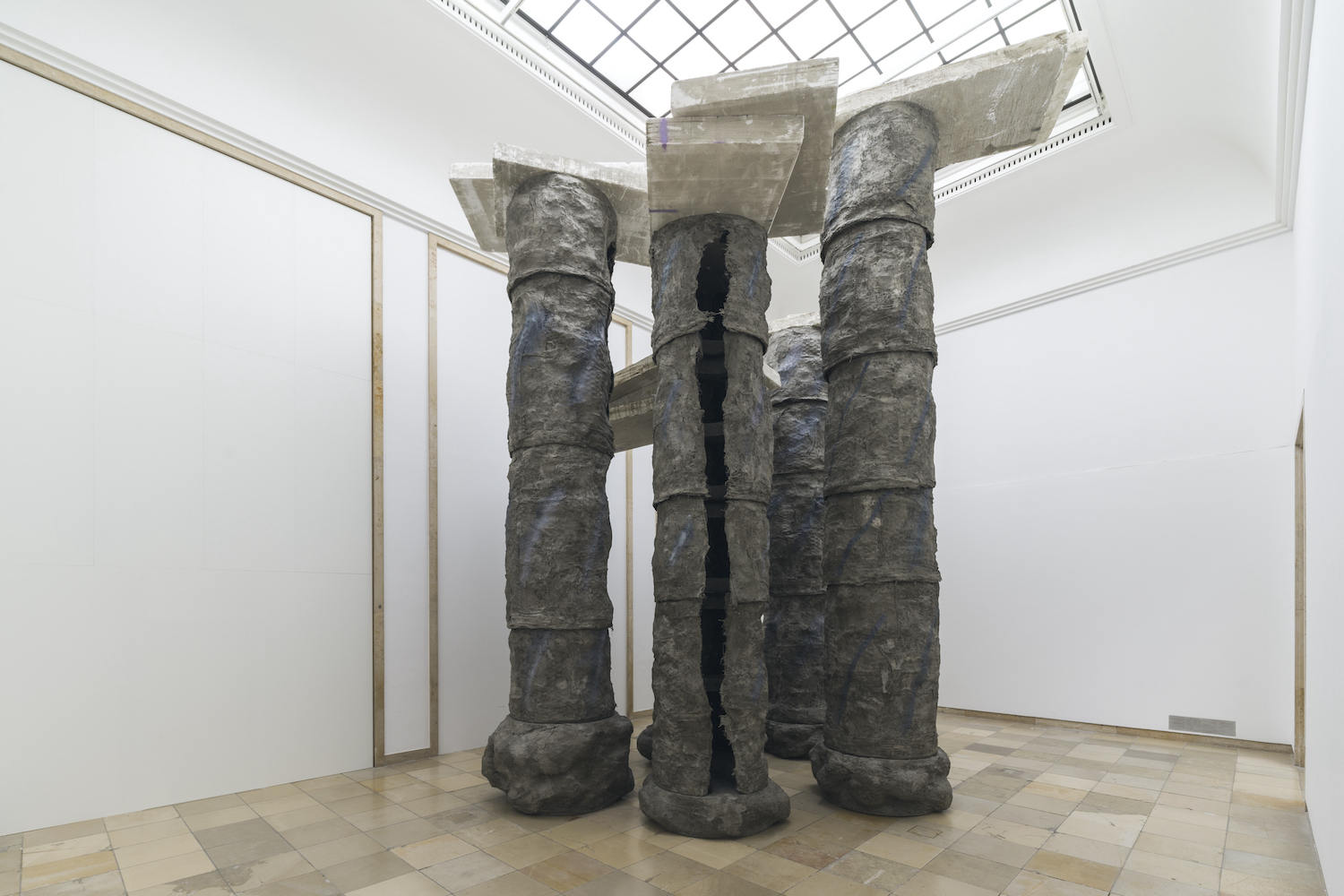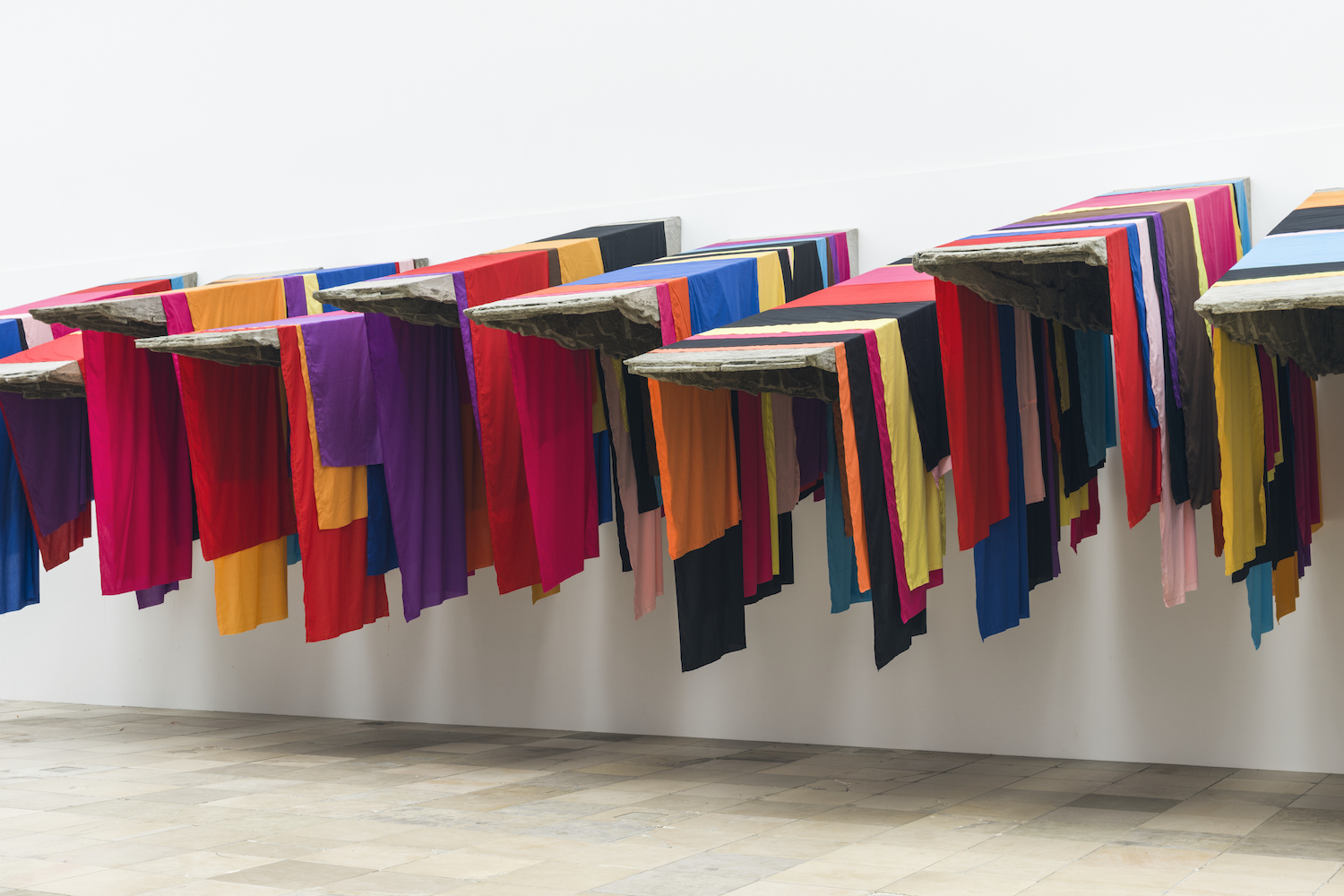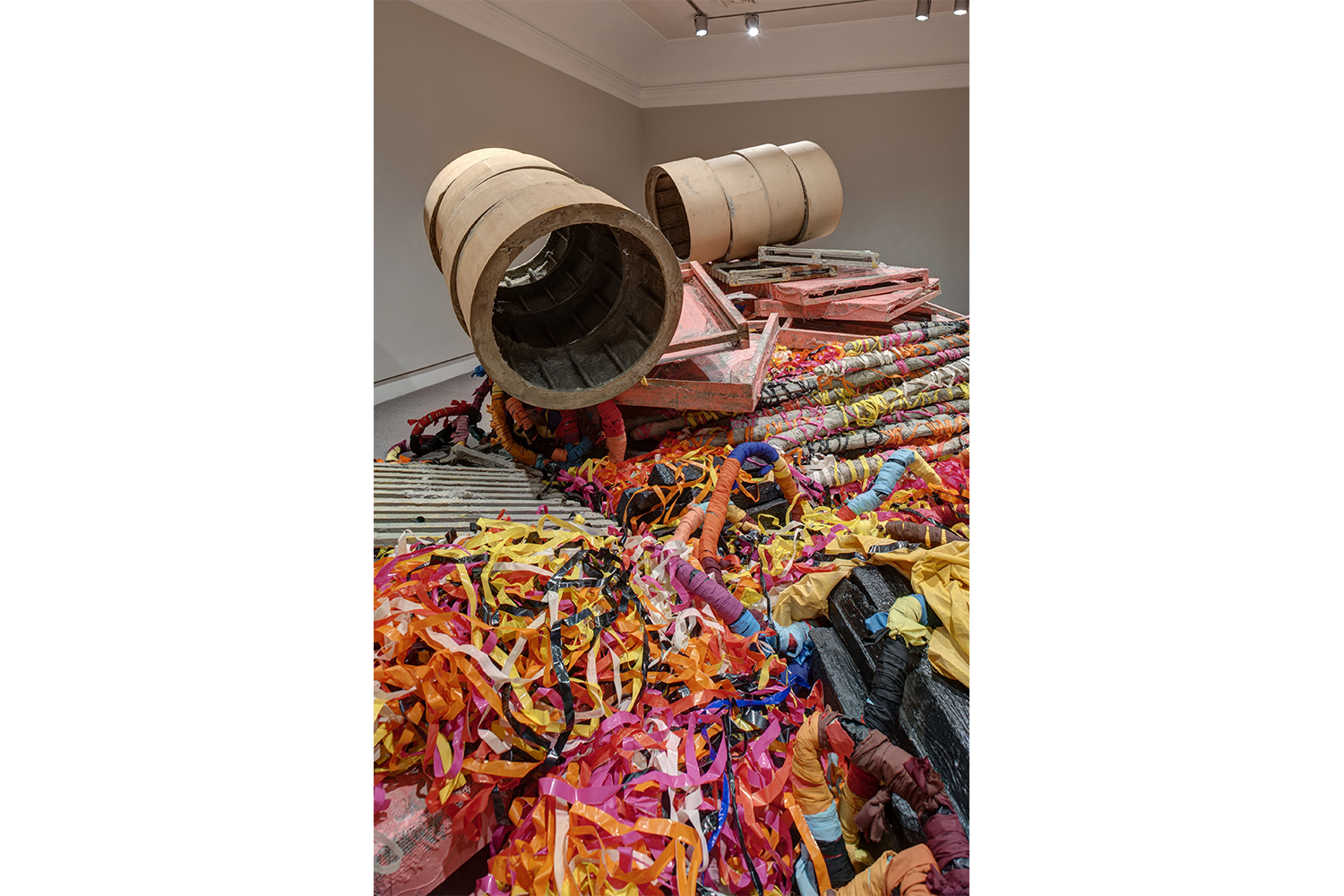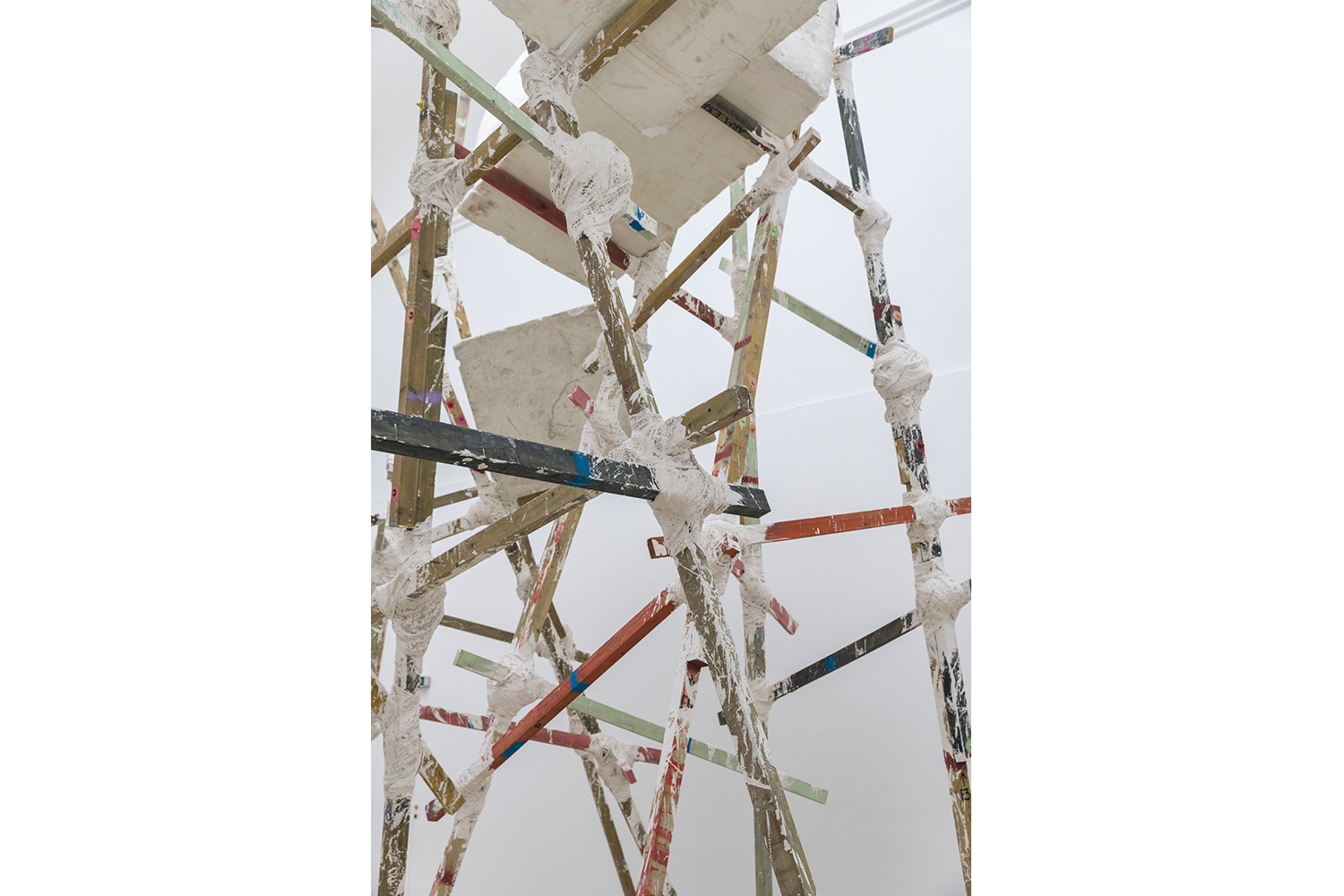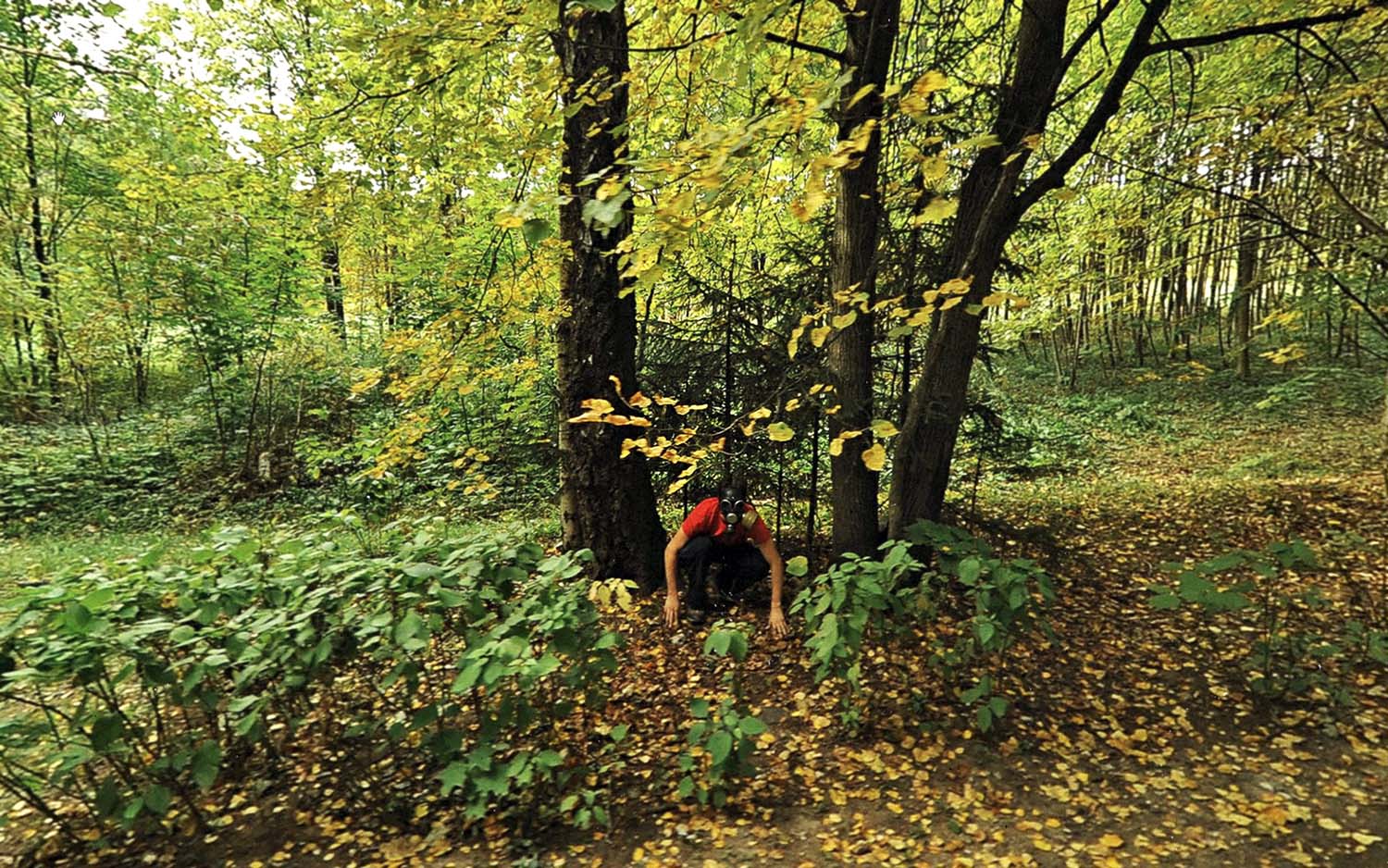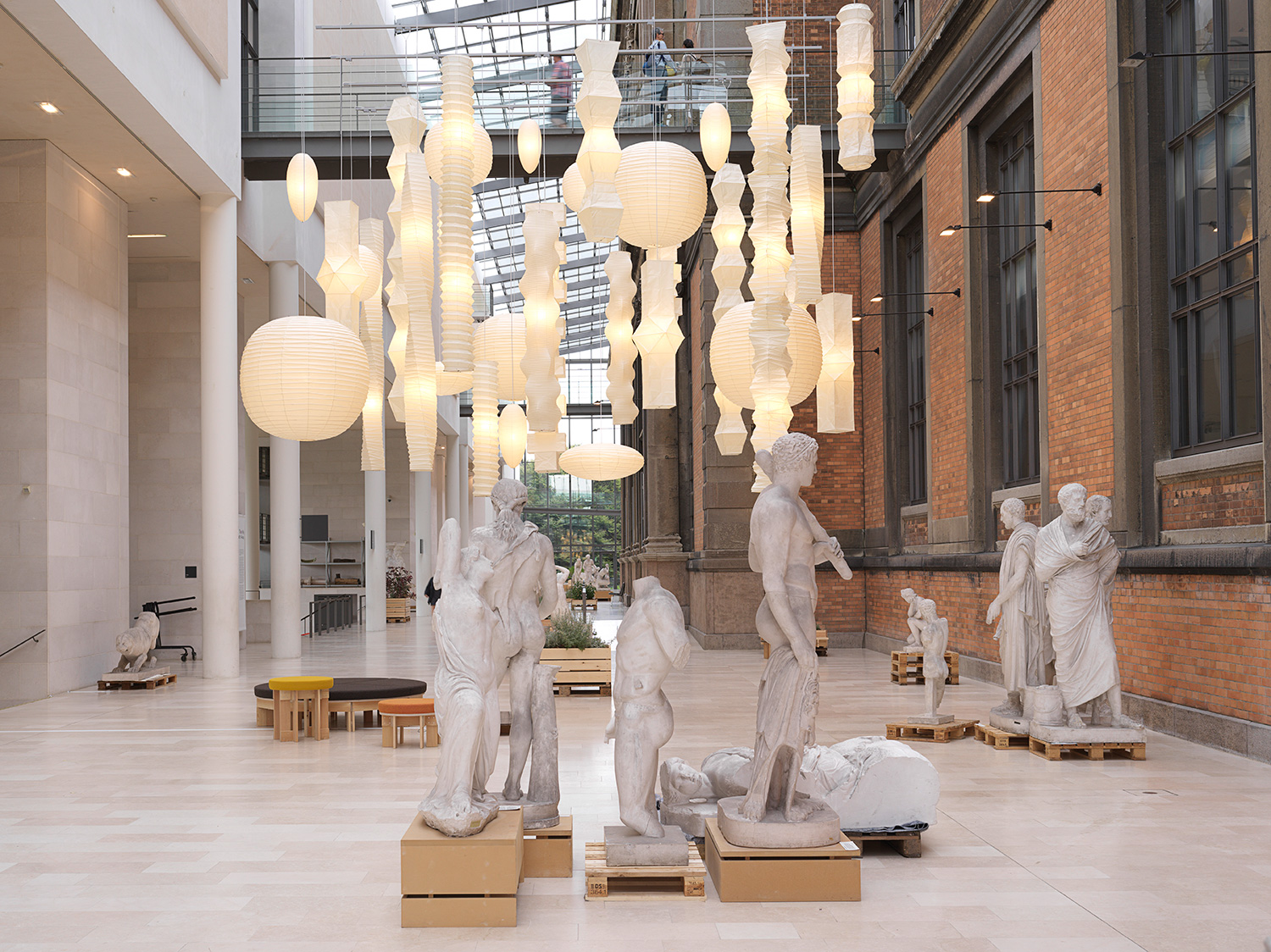British artist Phyllida Barlow had her late-blooming international breakthrough only after her retirement as a professor at the Slade School of Art, when, in 2010, Hans Ulrich Obrist invited her to exhibit at the Serpentine. During the decades before that she was considered an artist’s artist on the outskirts of media attention, pursuing an aesthetic that seemed too awkward or unrefined for mainstream success. By 2017, however, she had been chosen to represent Britain at the Venice Biennale.
Initiated by current director Andrea Lissoni, the exhibition “frontier” at Haus der Kunst is the largest survey of Barlow’s oeuvre to date. Two years of logistical planning went into the show, much of it in defiance of pandemic lockdowns. Day after day, the seventy-six-year-old artist connected via Zoom from London while an additional British team supported the delicate setup in Munich. Because of the mammoth scale of the architecture (along with the contaminated pathos that emanates from this former Nazi art temple), many of Barlow’s large-scale sculptures had to be adapted to site-specific circumstances.
With verve and chutzpa, Barlow took up the challenge to display her subversive talents as an irreverent gallery crasher and decidedly infiltrated these intrinsically hypertrophic museum spaces with her entropic sculptural approach. Her unique vocabulary suggests that she experiments rather than sculpts in a traditional sense. Over the course of fifty years, she has developed an expanded concept of environmental art that exposes a twisted and artfully weird sensibility. Her focus is on the act of creation, not on representing perfection. With architecture as her sparring partner, her collateral goal is one of viewer interaction.
Barlow prefers low-grade, inexpensive, and readily available everyday materials like concrete, plywood, plaster, steel wire, polyurethane foam, latex, or cloth. Influenced by urban reconstruction of the postwar period, she has a soft spot for materials that show signs of wear — remnants that can be found on the periphery of ordinary life, usually in the context of construction sites. Her unabashed bricolage particularly suits such raw materials. With a specific mixture of modesty and “bigger-than-life” exaggeration, Barlow implements fiercely anti-representational manifestations of ironic monumentality.
Kicking against the custom of preserving any artwork, it is a characteristic habit of Barlow that she destroys most of her works – most too bulky for storage – after a given exhibition ends. She consistently recycles these used materials in the form of new sculptures. Thus her objects reflect a fundamental continuity: a comforting encounter between past and future. The perpetual process of production, destruction, and reconstruction forms a paradigmatic circuit of the artist’s creativity. Damian Lentini, the curator of the current Munich show, comments: “The task of contemporary sculptors is to create a particular experience rather than further burden a world that is already overloaded with objects.” In this context, her cube-shaped sculpture Shedmesh from 2020 (with its sort of exploded blurry canvas outlines that make a congenial travesty of both Arte Povera and Minimal Art) is a reprise of the iconic original of 1975, reconstructed after two monochrome photographs.
A striking example of Barlow’s flirtation with catastrophe and the beauty of near-collapse is untitled: blocksonstilts(2018/19), a huge rough-and-ready sculptural construction with a remarkably unstable and transitory appearance; the sticks upon which five colossal white blocks are perched seem to be far too thin and provisionally assembled to support their obviously disproportional weight. Here Barlow plays off gravity, emphasizing a pointedly precarious balance. The potential for failure – which she characteristically describes as a “near miss” – is staged in an almost slapstick-like way. To some extent the artist manages to present carefully planned haphazard situations and fake aleatoric moments, thus creating temporary monuments that are only seemingly incidental. With its provisional, unfinished appearance the work undermines the conventional idea of a static and completed sculpture.
Her take on carefully planned chaos becomes manifest in the excessively sprawling environment untitled: hoard (2013), with its dynamic shifting assemblage of bulky building elements — an ostensibly purposeless pell-mell of messily compiled havoc whose raison d’être seems to be the mere principle of hyperbole, yet ultimately underscores its hidden sophistication with subtly balanced colors, forms, and sightlines. Barlow’s space-consuming composition gives the impression of a being in process, transporting latent kinetic energy.
Tightly caught in a giant chambre séparée, the sculpture fury: slashedcolumns (2016/17) features four oversized burst columns with the gray look and feel of sad elephant trunks. Devoid of any functional value, like architectural set pieces with their plinths deprived of any load-bearing function or representational force, they even appear to be structurally incapable of supporting their own weight. The columns are quite literally coming apart at the seams, allowing viewers to gaze into each of the objects and see its underlying armature. These deconstructed objects seem unstable in their relationship to space. Emanating exposure, vulnerability, and disablement they suggest a flock of alien creatures lost in space, apathetic yet somehow invested with the potential for sudden movement.

